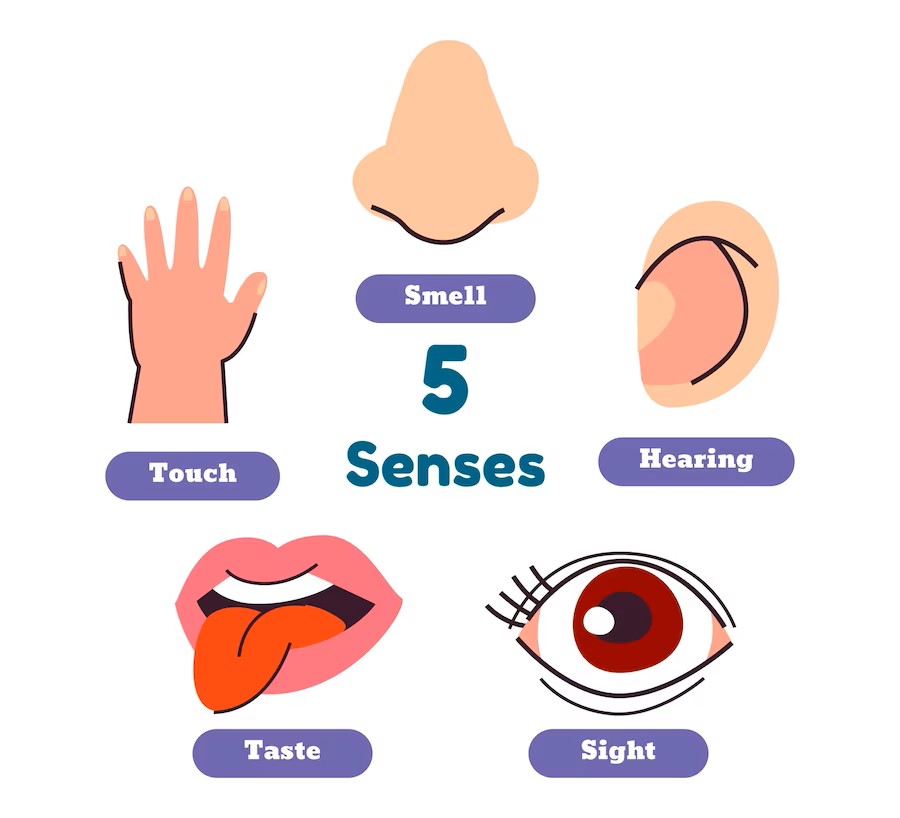Join the Occupational Therapy Service for children and young people as together we unlock each young person's potential through our SENSORY ZONE where we will take you through exciting ways to make the world of sensory more meaningful for you, your child/young person and your school.
Our Sensory Zone
Our Sensory Zone

Step 1: Let's Talk About Our Sensory Needs?
‘Sensory’ means how the human body takes in information from the senses, and this is important for everybody. Some conditions involve differences in how the sensory system works, like Autism. Learning about the sensory needs of your child/young person can help you connect with them and help them grow, so they can do their everyday activities.
What is the Sensory System?
Everyday, the senses collect information about the world around us and carry this information to our brain. It tells us what is happening, and decide what to do next.
There are 5 senses that most people know about, these are the ones we can see when we look at someone.

Touch, using our hands and skin.
Taste, using our taste buds.
Vision, using our eyes.
Smell, through the nose.
Hearing, through the ears.
You might be surprised to hear, we also have 3 extra, hidden senses! These are located inside the body, so we can’t see them if we look at someone else’s body.
Proprioception: tells me what position my body is in, in the space around me and how my muscles are working.
Vestibular: this tells the brain about where the body is compared to the ground beneath us, like if I am upside down or moving fast or slow.
Interoception: messages from our organs to tell us whether we’re full or hungry, need the toilet, or are in pain.
Take a look at the Sensory World Video Series below to find out how important our Sensory system is in our daily lives.
Sensory World Video Series
1. Introduction to Our Senses
2. Sensory Preferences
3. Knowing Your Senses
4. Sensory Friendly Environments
5. When a Sensory Preference Becomes a Problem
6. Interoception
Step 2: Helping My Child's Sensory Needs

What is Regulation?

Sensory Preference or Problem?

Connecting With My Child Through Sensory Play

How Can I Help My Child
Sensory Detective
Step 3: Everyday Situations

Sensory Corner At Home

Medical Appointments

Public Transport

Visiting the Park

Wearing Clothes
Step 4: Play Ideas

I Love Putting Things In My Mouth

I Love to Move

I Love Being Strong

I Love Being Messy

Learning To Do Slow Breathing

I Love Listening to Sounds

I Love Looking at Colourful Bright Toys
Coming soon

I Love Smelling & Tasting
Coming soon

Learning To Enjoy Being Messy
Coming soon

Learning To Enjoy Moving My Body
Coming soon
Sensory Play at Home
Step 5: Sensory Support in the School

Sensory Corner

Soft Play Room
Step 6: What's Next?
For some children and families, education and resources from the website will be enough support.
If your child continues to face challenges in daily activities because of their sensory needs, they may benefit from continuing on to the next stage for further support.
The support available will depend on your child's age.



